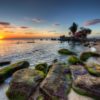Bouvet Island: The Most Remote Island In The World
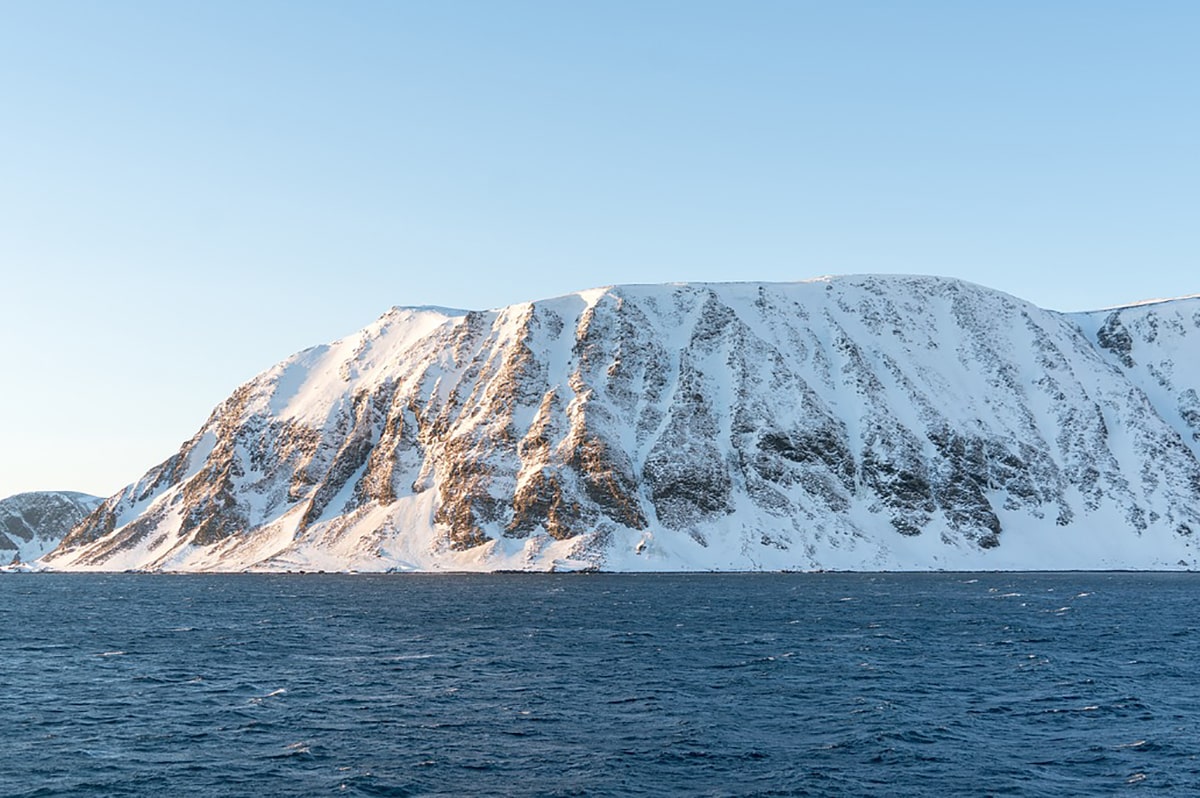
Table of contents
- History of the most remote island
- The Geology of Bouvet Island
- What is the peculiarity of Bouvet Island?
- Bouvet island population
- Fictional Approaches to Bouvet Island
- Climate and Weather of the island
- Can you live on Bouvet Island?
- Why did Norway claim the island?
- Why does Norway own Bouvet Island?
- FAQs for conclusion
Prepare yourself to embark on a journey of epic proportions as we delve into the exploration of the most remote island on this vast planet! Situated in the tumultuous South Atlantic Ocean lies Bouvet Island, a piece of land of unparalleled isolation. This rugged terrain, featuring dramatic and awe-inspiring scenery, beckons to adventurers and explorers alike with its siren song. And it’s no wonder, as this land is home to a plethora of unique and fascinating wildlife, thriving in a habitat unlike any other.
The complexity of Bouvet Island’s ecosystem and geology is not to be taken lightly. Its location and topography have made it a formidable place to visit, and only those who are truly up for the challenge are able to explore its secrets. Bouvet is covered in ice, and its peak reaches a staggering 2,930 feet above sea level, a testament to the raw power of nature.
History of the most remote island
The discovery of Bouvet Island dates back to 1739 when a French naval officer, Jean-Baptiste Charles Bouvet de Lozier, first laid eyes on the remote island. Despite this initial discovery, Bouvet remained largely unexplored for centuries until the British landed there in 1825. Since then, various expeditions have been launched to study its unique features.
In 1927, Norway asserted its claim to Bouvet Island and established a meteorological station on the island two years later in 1929. This station played a crucial role in providing valuable scientific data and insights into the island’s weather patterns and climate. However, due to the extreme weather conditions and the island’s remote location, the station was eventually abandoned in 1971.
Today, the island is designated as a nature reserve and has been recognized as a UNESCO World Heritage site. It remains one of the most remote and isolated islands on the planet, with its rugged terrain and dramatic scenery attracting adventurous explorers and scientists alike. Despite its challenging environment, Bouvet Island is home to a diverse range of unique wildlife, adapted to survive in a habitat unlike any other.
The Geology of Bouvet Island
Bouvet Island is a volcanic island located in the South Atlantic Ocean. Its terrain is covered in ice and snow, giving it a pristine and untouched appearance.
The island’s active volcano, Olavtoppen, stands tall at a height of 1,950 meters above sea level, making it the highest point on the island. If you’re an adventure seeker looking for a challenge, hiking to the summit of Olavtoppen is a must-do activity.
The island is also home to several glaciers, including the Gåsøyane Glacier, which is the largest glacier on the island. The glaciers have carved deep valleys into the island’s rocky terrain, creating a breathtaking landscape that’s perfect for nature lovers and photographers.
The island is located on the Mid-Atlantic Ridge, which is a boundary between two tectonic plates. This has resulted in several underwater volcanic eruptions, which have shaped the island’s unique geological features. The island is rich in basaltic rocks and lava flows, which are a testament to its volcanic history.
The Wildlife of Bouvet Island
Despite its harsh climate and remote location, Bouvet Island is home to a diverse range of wildlife. The island is an important breeding ground for several species of penguins and albatrosses, and it’s also home to seals and whales in the surrounding waters.
What is the peculiarity of Bouvet Island?
Bouvet Island is a volcanic island in the South Atlantic Ocean. It`s located in the South Atlantic Ocean, and it holds the prestigious title of being the most remote island in the world. This island is situated a whopping 1,739 kilometres (1,080 mi) away from the nearest human settlement, Tristan da Cunha. To put that into perspective, that’s almost as far as the distance between Los Angeles and Dallas!
It’s worth noting that Bouvet Island doesn’t have any natural sources of fresh water. So, if you’re thinking about travelling to this remote island, you’ll need to bring your own supply of H2O. While that might sound like a challenge, the island’s unique location and isolation have helped to preserve its pristine, untouched natural beauty.
You can see the Bouvet island map below:
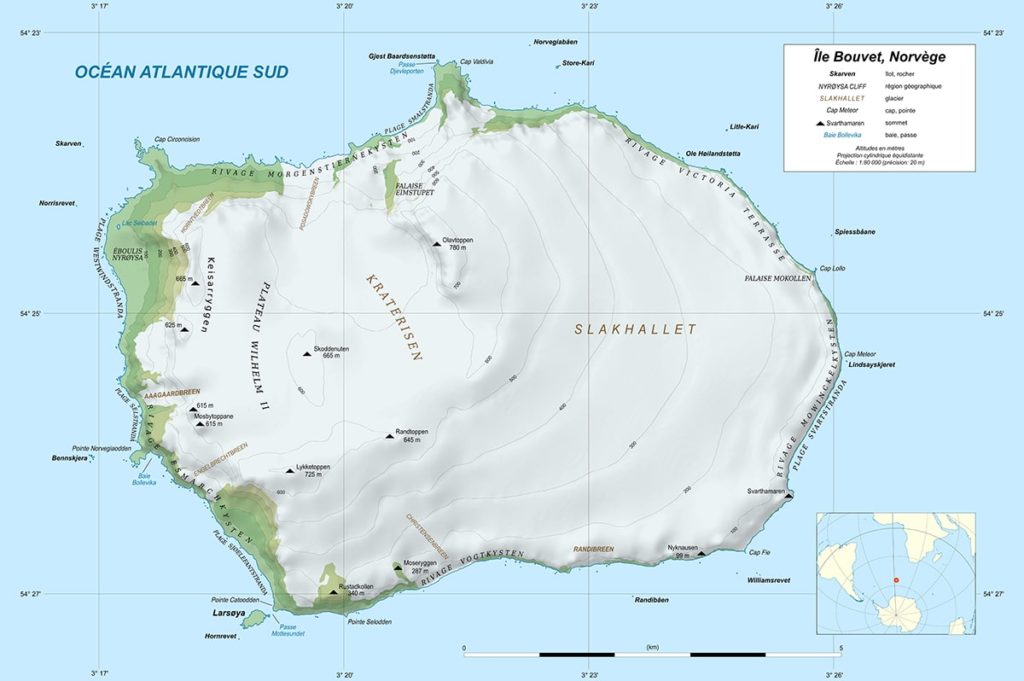
Bouvet island population
It“s a unique place as it’s completely uninhabited by humans. That’s right, there’s not a single person living on the island! In fact, it holds the distinction of being the largest private island in the world with no permanent inhabitants at all. However, a handful of seasonal researchers visit the island every year to study its ecology and wildlife.
Due to its extreme isolation, the only way to reach Bouvet Island is by boat. There are no airports or harbours on the island, and the nearest harbour is located in Cape Town, South Africa, which is about 1,000 miles away from the coast of Bouvet Island.
Interestingly, the island has received fewer visitors than some other remote islands due to its extreme remoteness. However, there was an American expedition in 1968 sponsored by the National Geographic Society that spent a week on the island carrying out surveys, collecting specimens, and conducting research on marine biology and geology. The crew published their findings in a publication called “Voyage to Antarctica.”
Since then, there have only been two subsequent visits to Bouvet Island. One in 1969 led by Professor Peter Scott aboard his ship ‘Robert Scott’, and another in 1971 as part of ‘Operation Deep Freeze’ led by Professor Scott and his wife Ginny. It’s clear that Bouvet Island’s isolation and lack of human inhabitants make it a unique and intriguing destination for researchers and adventurous travellers alike.
Read also: Greenland island as the biggest island in the world
Fictional Approaches to Bouvet Island
Because of the distant location of the volcanic island, the unknown early history and the mysteries of an abandoned lifeboat, it’s no wonder Bouvet Island attracts numerous literary minds. Bouvet Island has been the setting of more than 3 books / 3 movies, among which are the 2003 movies “Alien vs. Predator”.
The screenwriters used the island’s official Norwegian nickname, Bouvet. It should be noted however that the island represented in the un-rated movie is actually quite far from Bouvét Island.
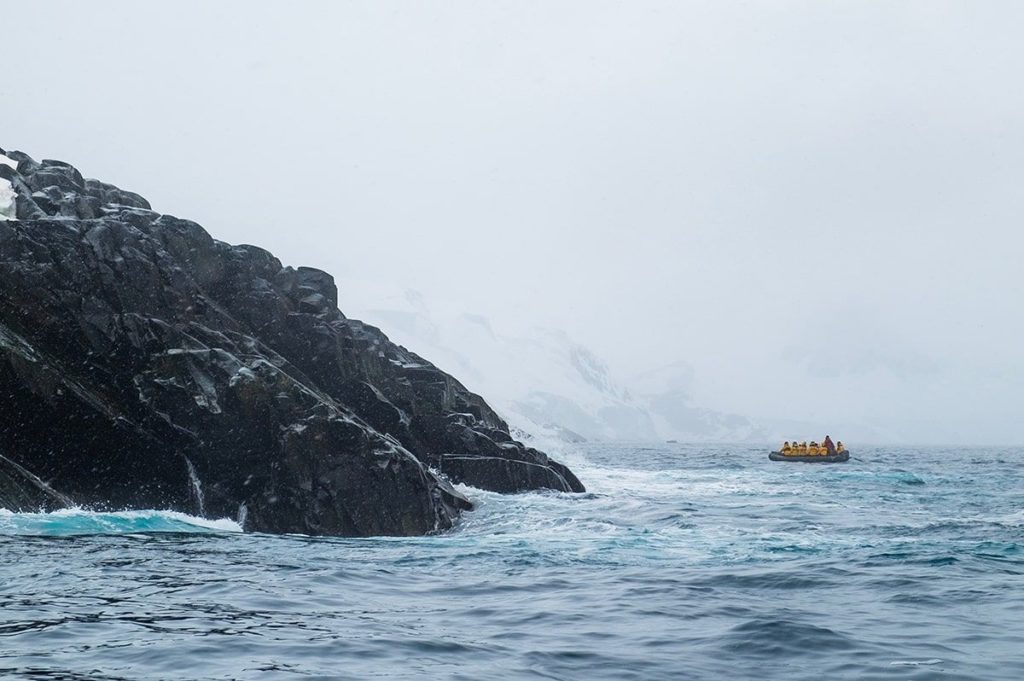
Climate and Weather of the island
Bouvet Island’s climate is not for the faint-hearted. If you’re looking for a warm, tropical vacation spot, this is definitely not it. The island’s remote location in the South Atlantic Ocean puts it right in the path of the Antarctic Circumpolar Current, which means it’s always cold and windy.
The entire island is blanketed in ice and snow year-round, with only the rocky shores offering a glimpse of open water. The island’s polar maritime climate brings with it temperatures that range from a chilly -10°C (14°F) to a slightly warmer 3°C (37°F) during the summer. So if you’re planning a trip to Bouvet Island, be sure to pack some warm clothes and plenty of layers.
In addition to the cold temperatures, Bouvet Island also receives heavy snowfall throughout the year. This contributes to the island’s rugged terrain and gives it a breathtakingly beautiful, yet harsh and unforgiving, landscape.
Despite its challenging climate, Bouvet Island remains a popular destination for adventurous travellers looking for a unique and remote experience.
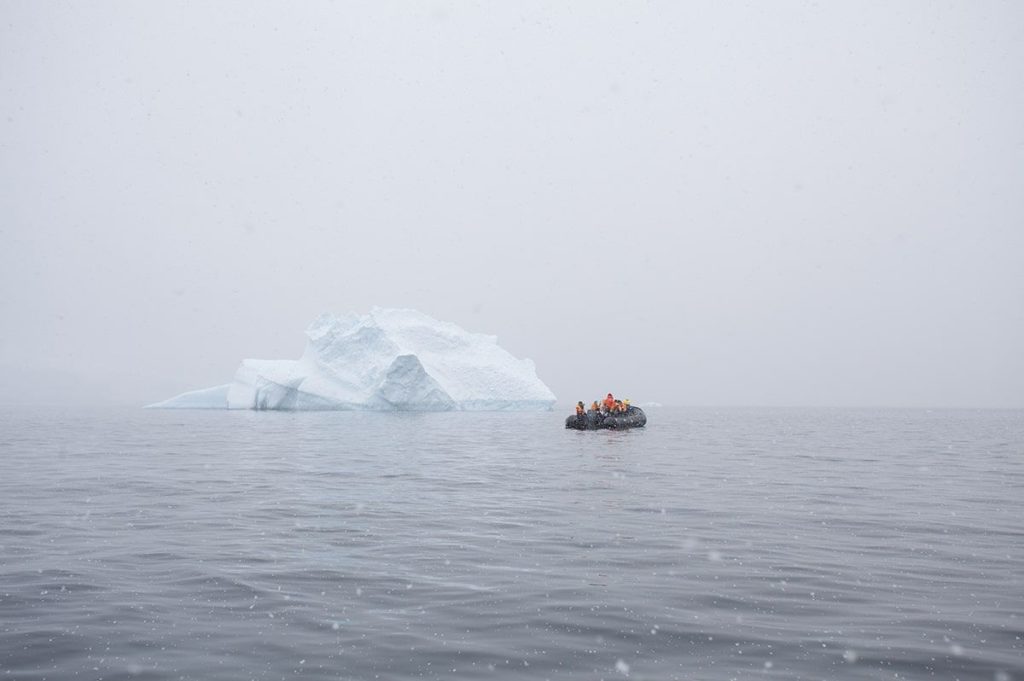
Can you live on Bouvet Island?
It’s unlikely that you can live on Bouvet Island for a long time, as there are no airports, hotels, or restaurants there. The only landing site is a small helipad, which makes it difficult for people to stay there for an extended period.
Interestingly, Bouvet Island is one of several dozen “land banks” owned by companies based in the tax havens of Bermuda and Singapore. These companies purchase undeveloped land around the world, including Antarctica, to collect rents from investors looking to avoid paying taxes on their returns.
A land for researchers
While people can’t live there permanently, there are a few seasonal researchers who visit Bouvet Island every year to study its ecology and wildlife. The island has five research stations and has been visited by researchers from many countries since the first station was built in 1968 by the British.
If you’re interested in investing in Bouvet Island, you could consider buying shares in companies that own land banks like it. These companies charge fees for managing property portfolios and parking investments in real estate markets that don’t pay taxes on capital gains, such as Switzerland. They also sell shares in their own companies, which can be sold back to investors as stocks or bonds.
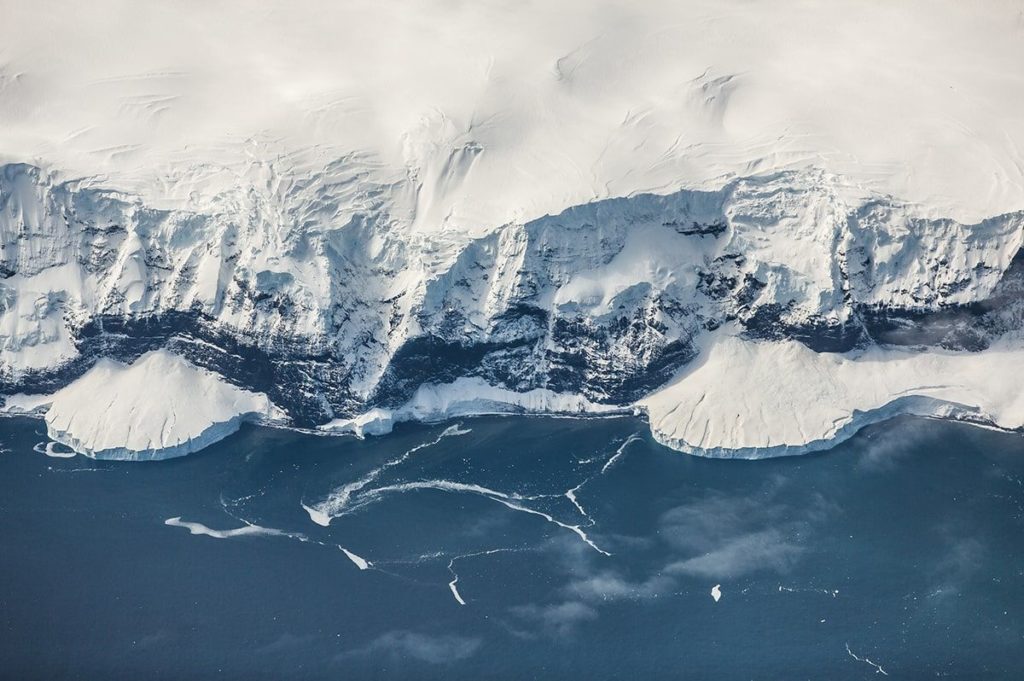
Why did Norway claim the island?
In 1927 the first Norwegian expedition entered this place and claimed them as Norway. Originally it became Bouvet Island (Bouvetya) in Norwegian. In 1930, after an agreement with England on claim rights it became a Norwegian dependency.
Why does Norway own Bouvet Island?
It’s fascinating to learn about how Norway came to own Bouvet Island! The island’s discovery and subsequent claim by a Norwegian whaling vessel played a significant role in its ownership. Norway’s control over Bouvet has been consistent for many years, and it is now considered part of the larger archipelago of Svalbard.
Despite its remote location and uninhabitable conditions, it still holds a unique allure for researchers and adventurers alike. It’s amazing to think about all the interesting facts and stories that surround this tiny landmass in the middle of the South Atlantic Ocean.
FAQs for conclusion
No, Bouvet Island is uninhabited and only accessible to scientists and researchers who are interested in studying its unique geology and wildlife.
Bouvet Island (in Norwegian: Bouvetyya) is the most remote island to date in Antarctica, extending more than 1400 km to the southeast and being the nearest land mass. May 5, 2008.
The highest point on Bouvet Island is Olavtoppen, which stands at a height of 1,950 meters above sea level.
Bouvet Island is an important breeding ground for several species of penguins and albatrosses, and it’s also home to seals and whales in the surrounding waters.
Bouvet Island has a harsh climate with strong winds and low temperatures. The island is covered in ice and snow, and it’s only visited by researchers during the summer months.
We hope that you have enjoyed reading all of the information we have provided you regarding Bouvet Island.
You might find interesting as well: Countries With Most Islands



